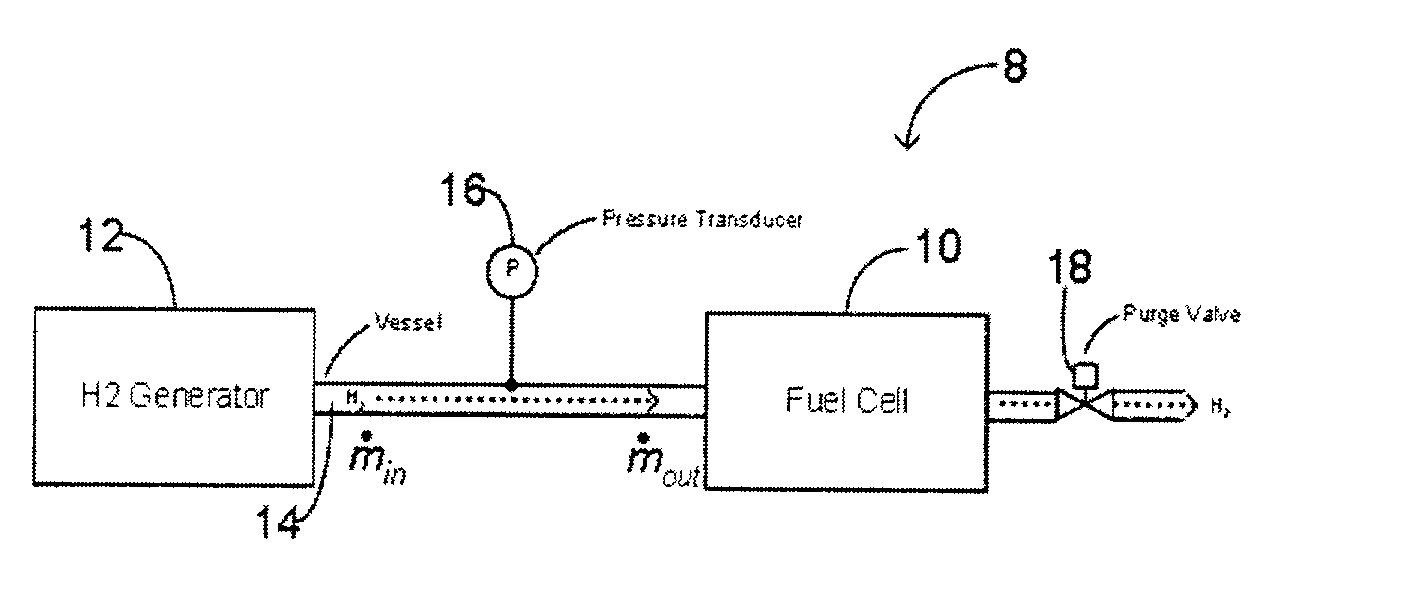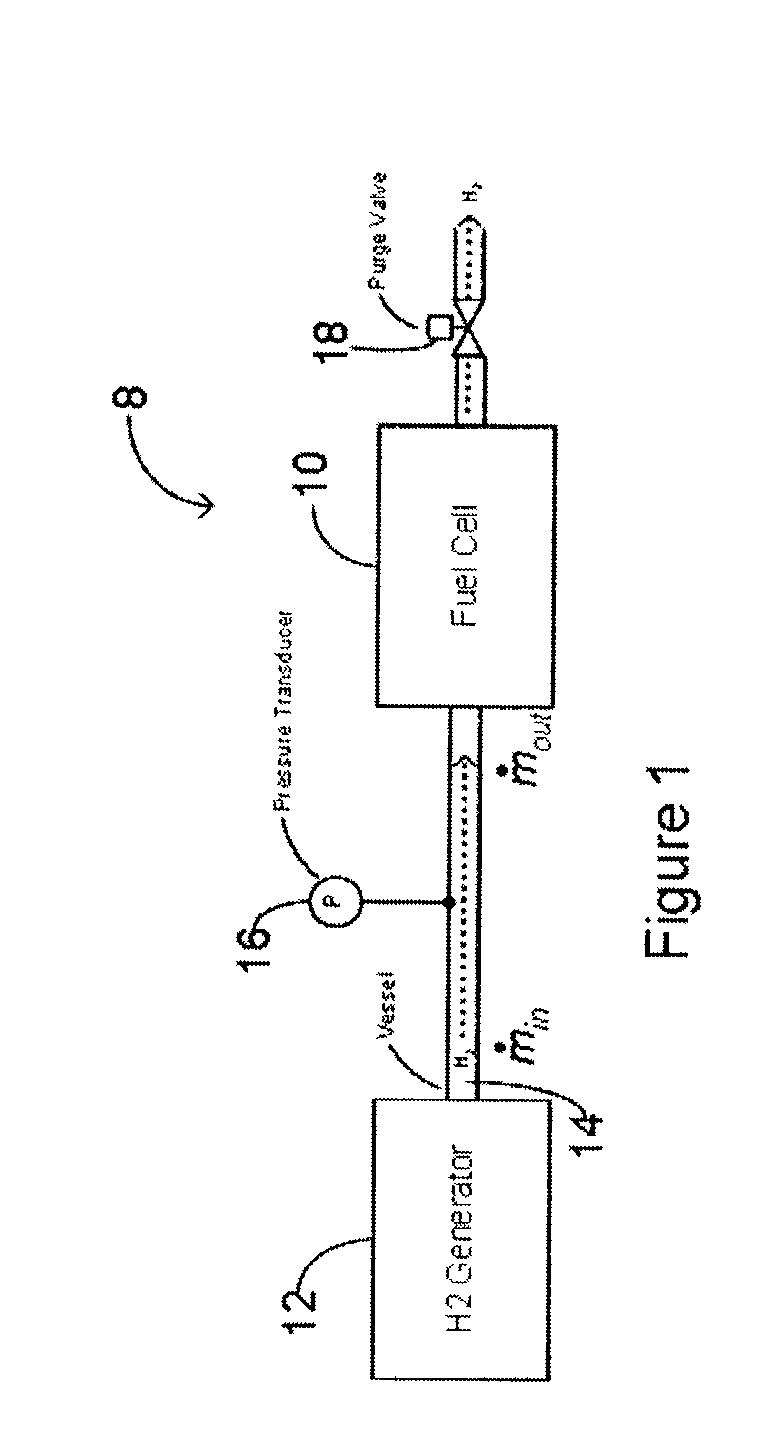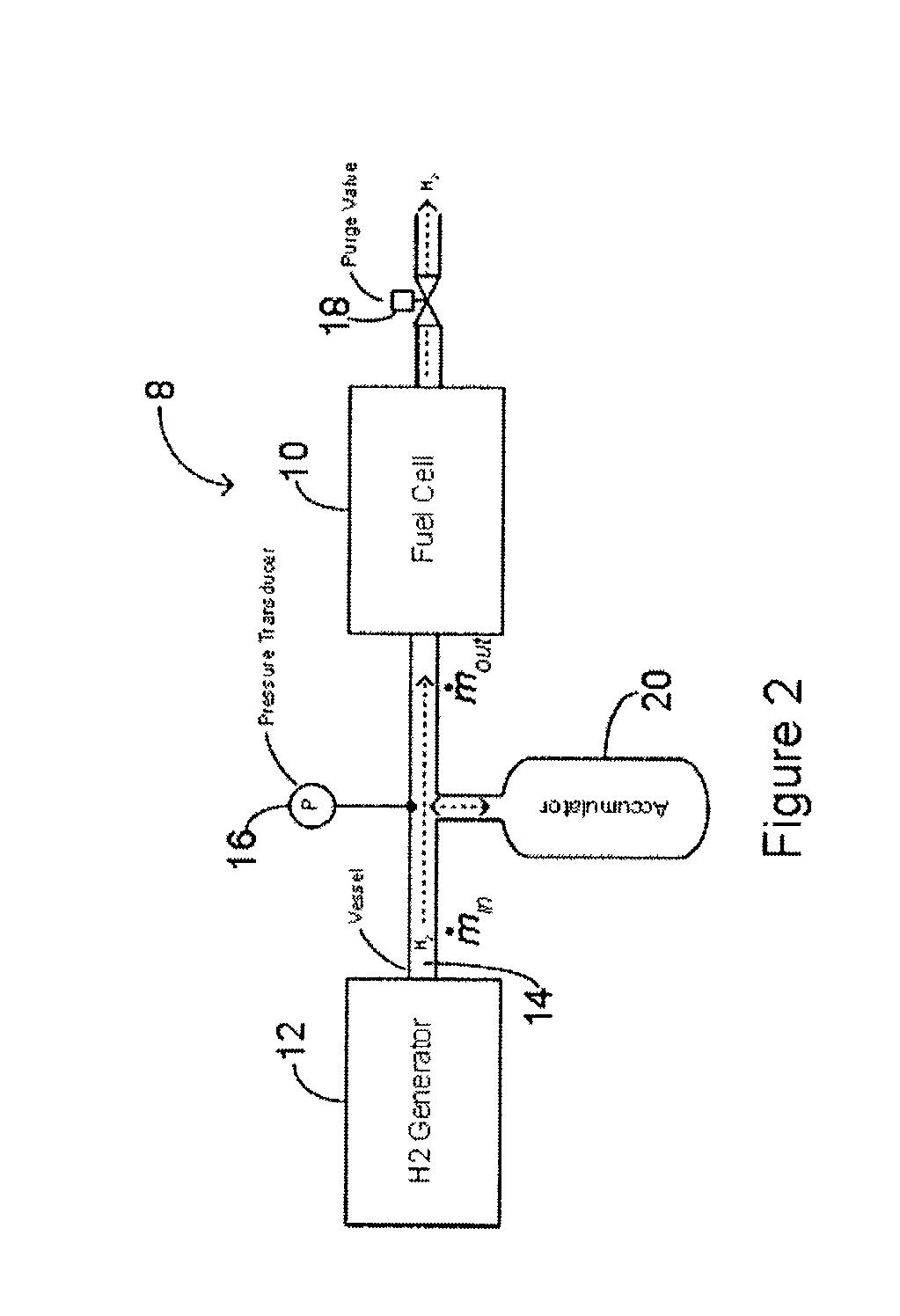Method and system for controlling the operation of a hydrogen generator and a fuel cell
a technology of hydrogen generator and fuel cell, which is applied in the direction of secondary cell charging/discharging, electric vehicles, fuel cells, etc., can solve the problems of overheating scenario, process is inherently slow for larger reformers with significant thermal mass, and reduce the hydrogen production ra
- Summary
- Abstract
- Description
- Claims
- Application Information
AI Technical Summary
Benefits of technology
Problems solved by technology
Method used
Image
Examples
Embodiment Construction
[0046] FIG. 1 illustrates schematically one possible embodiment of the Applicant's control system 8 for regulating the supply of fuel to a fuel cell 10. In the illustrated embodiment fuel cell 10 receives a supply of hydrogen fuel from a hydrogen generator 12 through a supply conduit 14. As described further below, hydrogen generator 12 may comprise, for example, a reformer coupled to a hydrogen separator. A pressure sensor 16 is provided for measuring the hydrogen pressure within conduit 14.
[0047] Hydrogen fuel cells are typically dead-ended. As used in this patent application "dead-ended" means that hydrogen entering fuel cell 10 is consumed and there is ordinarily no path for excess hydrogen to exit directly (this includes systems that recirculate hydrogen). As shown in FIG. 1, a purge valve 18 may be provided for periodically expelling from fuel cell 10 contaminants and water vapour which build in concentration therein. In particular, the purge system temporarily opens the dead-...
PUM
 Login to View More
Login to View More Abstract
Description
Claims
Application Information
 Login to View More
Login to View More - R&D
- Intellectual Property
- Life Sciences
- Materials
- Tech Scout
- Unparalleled Data Quality
- Higher Quality Content
- 60% Fewer Hallucinations
Browse by: Latest US Patents, China's latest patents, Technical Efficacy Thesaurus, Application Domain, Technology Topic, Popular Technical Reports.
© 2025 PatSnap. All rights reserved.Legal|Privacy policy|Modern Slavery Act Transparency Statement|Sitemap|About US| Contact US: help@patsnap.com



